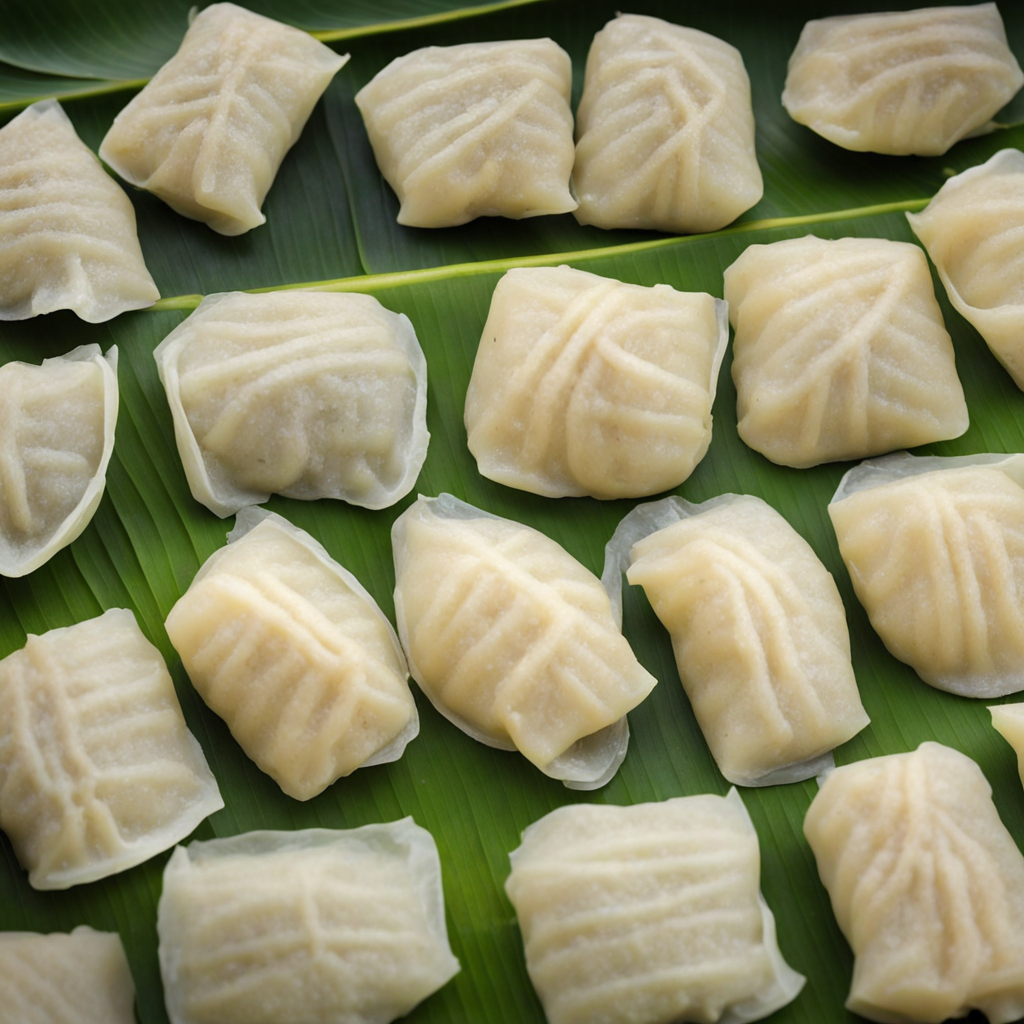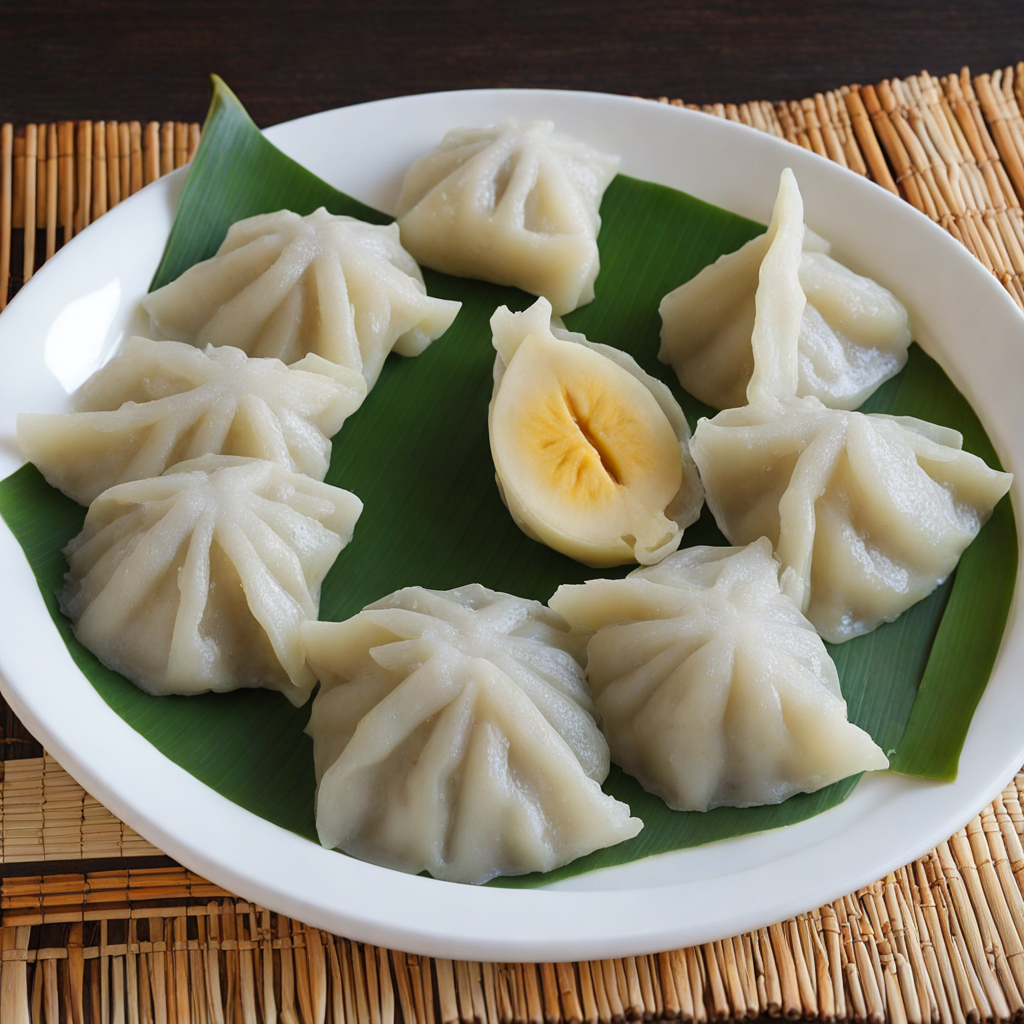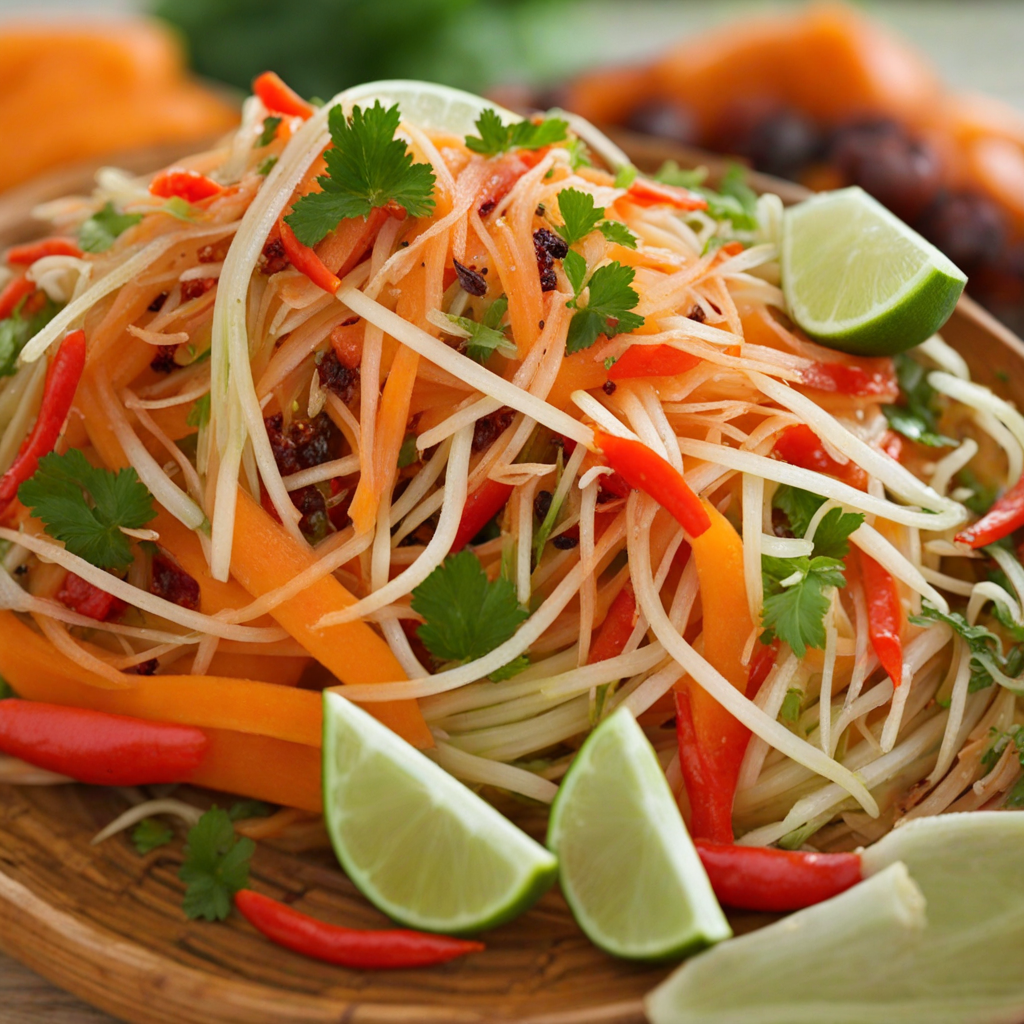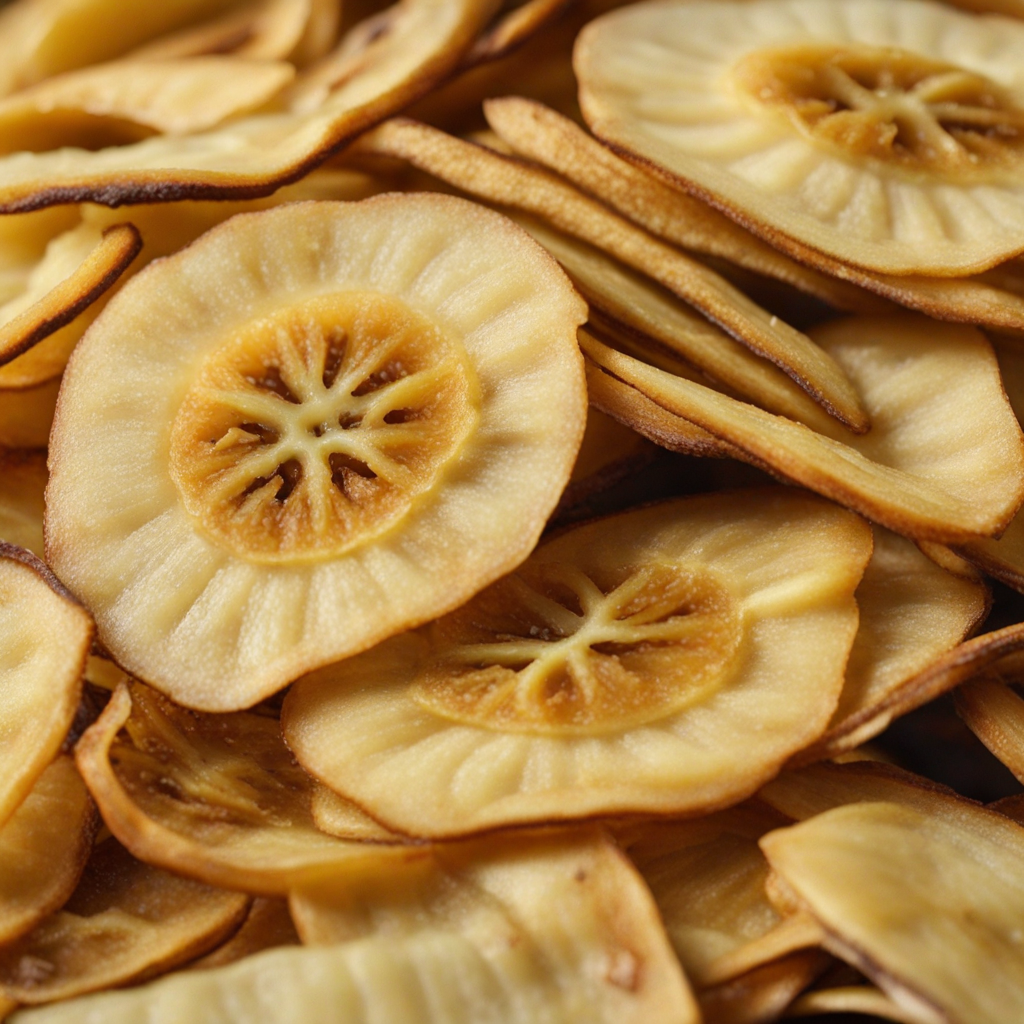Sago Dumplings
Sago Dumplings are a delightful culinary creation from Papua New Guinea, showcasing the unique flavors and textures of sago, a starch extracted from the pith of sago palms. These dumplings are typically small, round, and chewy, offering a satisfying bite that is both comforting and intriguing. The preparation involves mixing sago flour with water until it forms a pliable dough, which is then shaped into dumplings. The simplicity of the ingredients allows the natural flavor of the sago to shine, making it a versatile base for various fillings or sauces. Traditionally, Sago Dumplings can be filled with a variety of ingredients, such as minced meat, fish, or vegetables, seasoned with local herbs and spices that reflect the rich biodiversity of Papua New Guinea. The dumplings are often steamed or boiled, resulting in a soft and slightly sticky exterior that contrasts beautifully with the savory filling. When served, they are typically accompanied by a dipping sauce or a flavorful broth, enhancing the overall taste experience and allowing for customization according to personal preference. One of the most captivating aspects of Sago Dumplings is their cultural significance and the communal aspect of their preparation. In many Papua New Guinean communities, making these dumplings is a social activity, bringing families and friends together. The dish not only represents the culinary heritage of the region but also embodies the spirit of sharing and togetherness that is central to the culture. As you explore Sago Dumplings, you are not just tasting a dish; you are experiencing a connection to the land and the people who have cherished this food for generations.
How It Became This Dish
## The History of Saksak: A Culinary Treasure of Papua New Guinea Origins of Saksak Saksak, a traditional dish from Papua New Guinea, is a testament to the rich tapestry of culinary practices that emerge from the diverse cultures of this island nation. Its origins can be traced back to the indigenous practices of the highland and coastal communities, where the natural environment played a crucial role in shaping dietary habits. At the heart of Saksak is sago, derived from the sago palm, which thrives in the wetlands of Papua New Guinea. The extraction of sago starch involves a labor-intensive process: the palm trunk is harvested, and the pith is grated and washed to extract the starch, which is then cooked to create a gelatinous, sticky substance. This method has been practiced for centuries, with archaeological evidence suggesting that sago has been a staple food for the region's inhabitants for over 30,000 years. Cultural Significance Saksak holds a prominent place within the cultural fabric of Papua New Guinea. Beyond its nutritional value, it symbolizes community, tradition, and identity. The preparation of Saksak is often a communal activity, bringing families and neighbors together. During special occasions, such as weddings or festivals, the making of Saksak can be a communal celebration, reflecting the cooperative spirit that is central to many Papua New Guinean societies. The dish is not just a source of sustenance but also carries cultural meanings. In many communities, Saksak is associated with hospitality and sharing. Offering Saksak to guests is a sign of respect and welcome. The dish also plays a role in various rituals and ceremonies, marking important life events and the passage of time. For instance, it might be served during initiation rites or as part of mourning traditions. Development Over Time As Papua New Guinea navigated through colonial influences, globalization, and modernity, the preparation and consumption of Saksak have evolved while retaining its core identity. The introduction of new agricultural practices and ingredients has led to variations of the traditional dish. Modern cooks may incorporate ingredients such as coconut milk, sugar, or even fruits to enhance the flavor and texture of Saksak, making it more appealing to contemporary palates. In urban areas, where traditional practices may be challenged by the fast-paced lifestyle, Saksak continues to hold significance. It serves as a culinary bridge between generations, where younger Papua New Guineans learn about their heritage through cooking and sharing this iconic dish. The adaptability of Saksak has allowed it to remain relevant, with families often experimenting with recipes while still honoring the traditional methods of preparation. With the advent of tourism and greater visibility on the global stage, Saksak has gained recognition beyond Papua New Guinea's borders. Food enthusiasts and travelers seeking authentic culinary experiences are drawn to this traditional dish, leading to a renewed interest in its preparation and cultural significance. Restaurants and local eateries often feature Saksak on their menus, celebrating its roots while introducing it to new audiences. The Nutritional and Culinary Aspects Nutritionally, Saksak is a vital food source, particularly in regions where other crops may not flourish. It is primarily carbohydrate-based, providing energy to the communities that rely on it. When served with accompaniments like fish, meat, or vegetables, Saksak can be part of a balanced diet, reflecting the agricultural diversity of Papua New Guinea. Culinary-wise, Saksak is versatile. The texture can range from smooth and creamy to more solid, depending on the preparation method. Traditionally, it is served in a round or oval shape, often accompanied by a variety of dips or sauces that enhance its flavor profile. In some regions, it may be enjoyed with a savory stew or a sweet syrup, showcasing the dish's adaptability to both savory and sweet contexts. Modern Interpretations and Global Influence The global food landscape has seen a growing interest in indigenous and traditional foods, leading to a renaissance of dishes like Saksak. Chefs and home cooks alike are experimenting with traditional recipes, often incorporating modern cooking techniques or fusion elements. This has sparked dialogue around authenticity, heritage, and the evolving nature of traditional foods in contemporary society. Social media platforms have played a pivotal role in this resurgence. Videos and posts showcasing the preparation of Saksak have gone viral, educating audiences about its cultural significance and the labor that goes into its making. Such platforms have also allowed Papua New Guineans to share their culinary heritage on a global stage, fostering appreciation and respect for their traditions. Challenges and Preservation Despite its rich history and cultural importance, Saksak and its traditional preparation face challenges. The modernization of agriculture, climate change, and urbanization threaten the sago palms that are essential for Saksak. As communities shift towards more commercial and processed foods, there is a risk of losing the traditional methods and the cultural practices associated with them. To combat this, various initiatives are underway to preserve and promote traditional foods like Saksak. Community workshops, cooking classes, and cultural festivals aim to engage younger generations, ensuring that the knowledge and skills associated with Saksak continue to thrive. These efforts not only safeguard culinary heritage but also foster a sense of pride in local identity and sustainability. Conclusion Saksak is more than just a dish; it is a symbol of Papua New Guinea's rich cultural heritage, a reflection of community values, and a testament to the resilience of traditional culinary practices. Its journey from ancient times to the modern culinary scene encapsulates the dynamic interplay between tradition and innovation. As Papua New Guinea continues to embrace its identity in a rapidly changing world, Saksak will undoubtedly remain a cherished part of its culinary narrative, connecting past, present, and future generations through the simple act of sharing food.
You may like
Discover local flavors from Papua New Guinea







